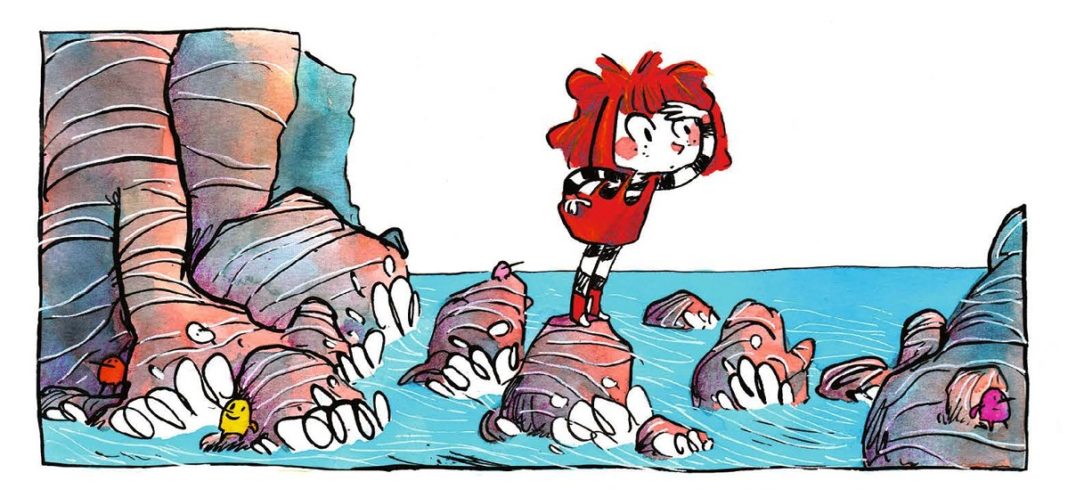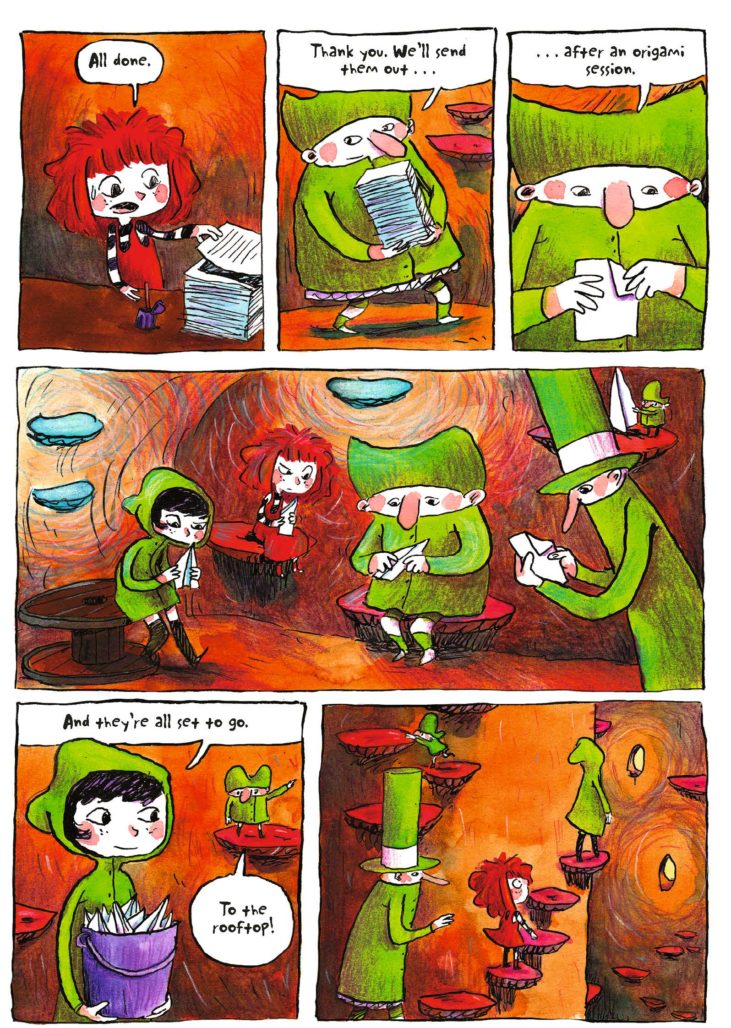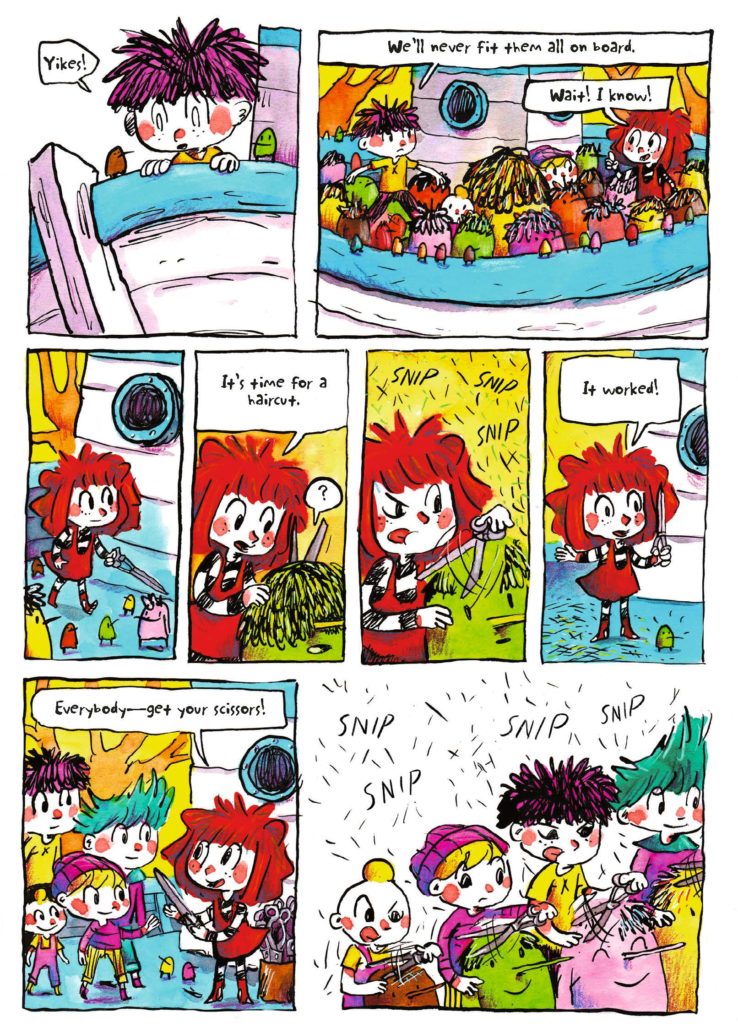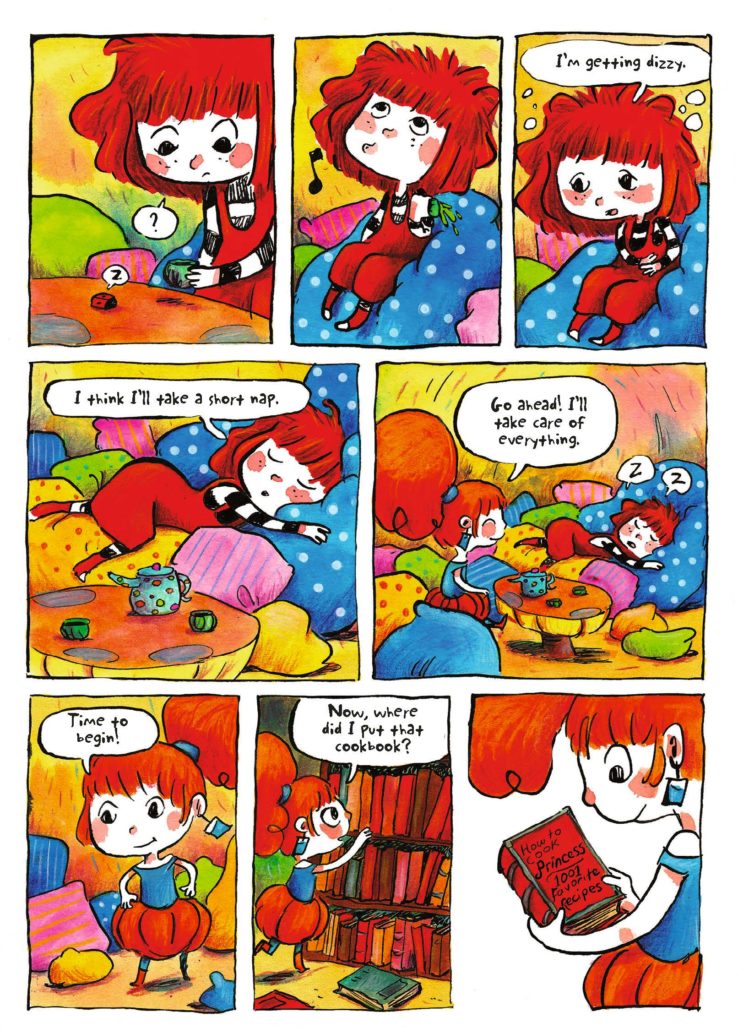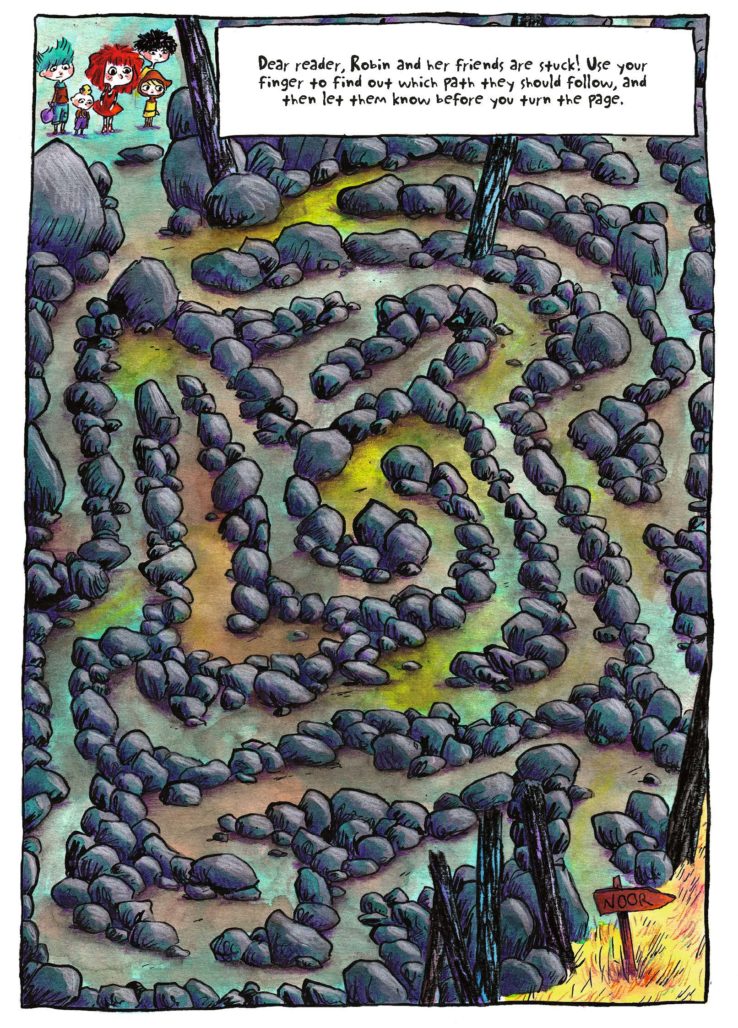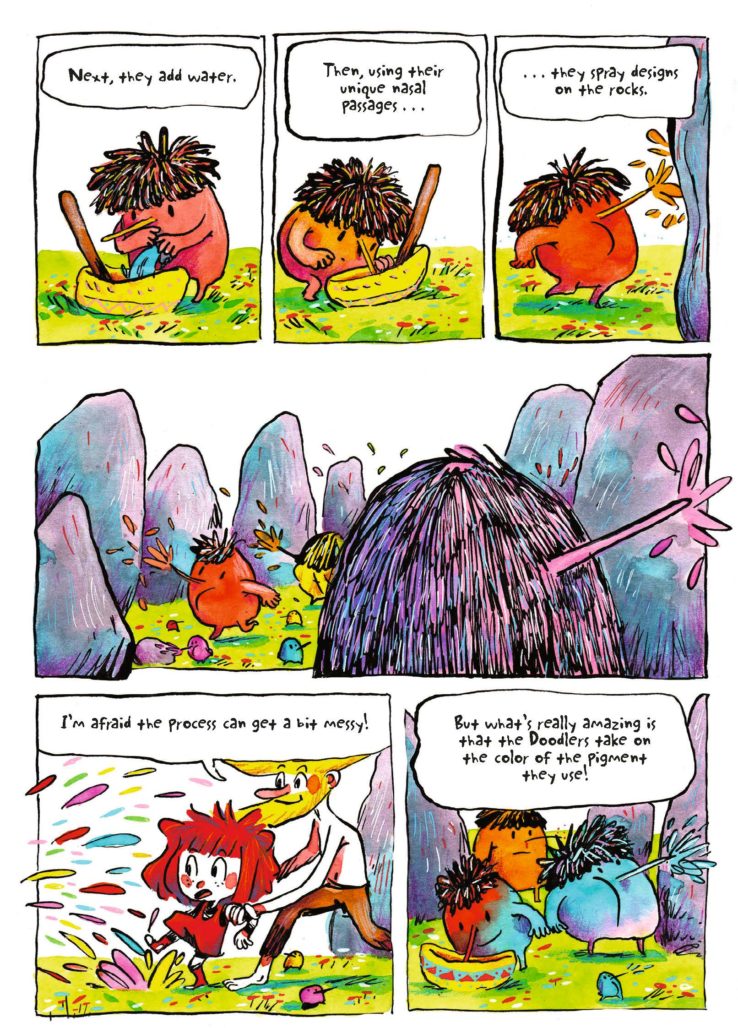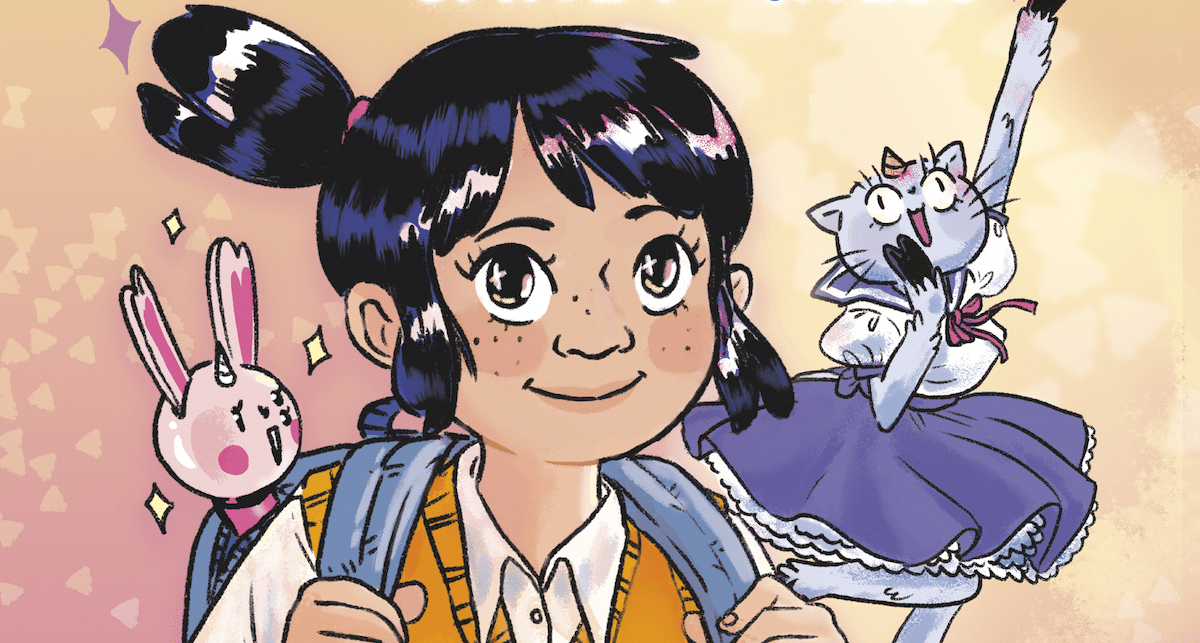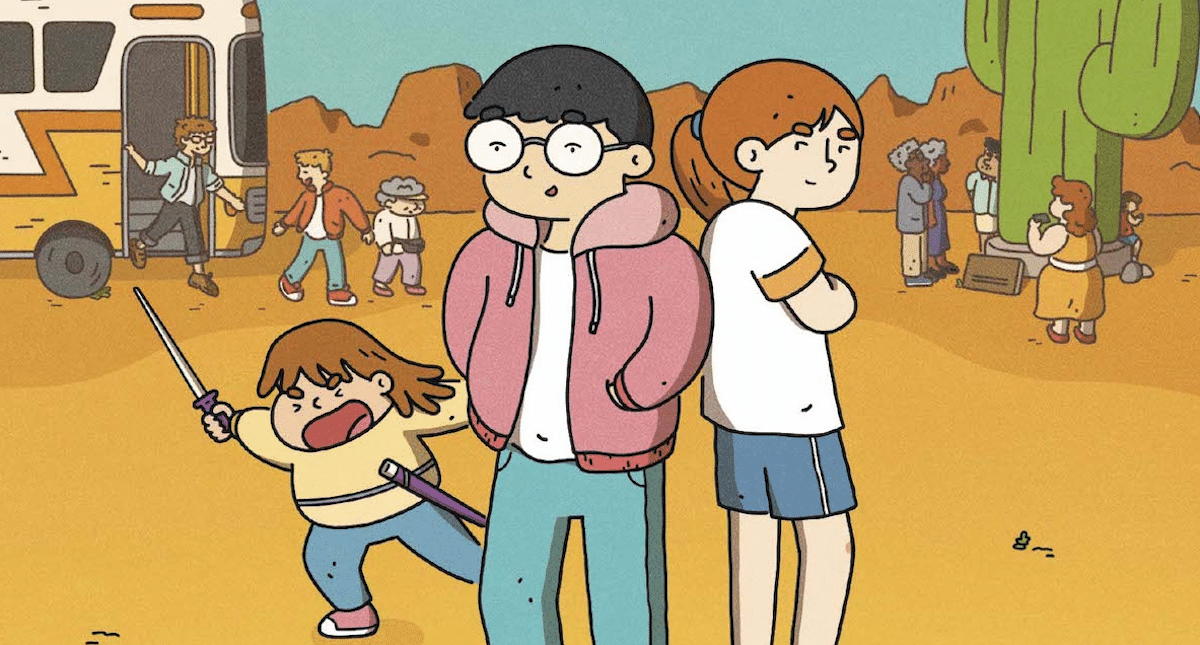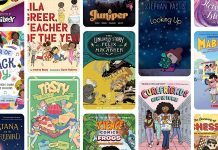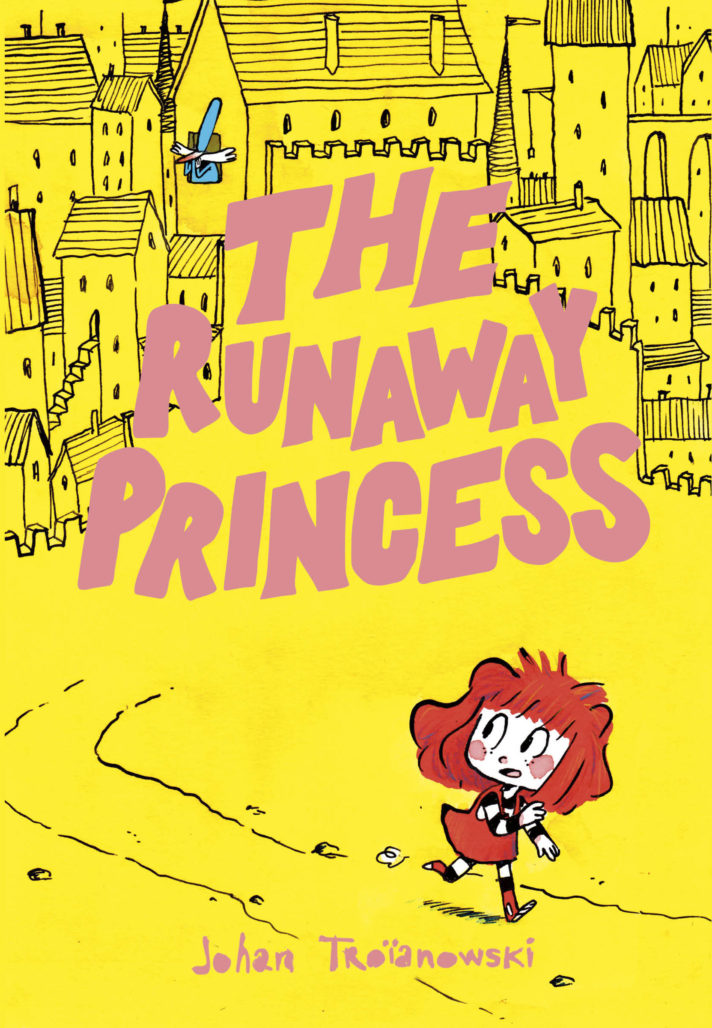
Originally released in France, The Runaway Princess collects the first three volumes of the Rouge series and marks Troïanowski’s American book market debut. Recently, the Beat sat down with Troïanowski to explore the influences on this fantastic new title for young readers.
Alex Lu: Johan, I believe The Runaway Princess is your first comic to be translated into English, but you have been creating comics for French audiences for a number of years now. As an introduction, could you tell us about your career path so far?
Johan Troïanowski: Yes – it’s my first comic translated into English, and I’m so happy! In France, I’ve made comics for kids for over fifteen years. I started out illustrating poetry for babies, doing some music, and working on fanzines and fan comics. When I invented the character of Robin, I knew there were a lot of adventures in store. I’ve also created some silent comics – I love them – and comics for babies, too. I’m working now on a new graphic novel called ‘Lune and Merlin,’ and my next project will be an RPG for kids set in a universe of monsters.
Lu: What was the origin of The Runaway Princess? What kinds of stories influenced the creation of the Rouge series and what sort of audience did you hope to reach through its creation?
Troïanowski: I love writing fantasies for kids, like the ones I read when I was little – Alice’s Adventures in Wonderland, by Lewis Carroll, Philemon by Fred, Scrooge McDuck by Carl Barks and Don Rosa, and also the fairy tales of Little Red Riding Hood and Bluebeard. All of those stories had a big effect on me – and I hope one day I can write something that has an effect like that on kids and adults!
Lu: It probably goes without saying, but The Runaway Princess primarily focuses on Robin, a young girl with distinctive red hair who has a knack for stumbling into magical adventures. She’s the opposite of the damsel in distress archetype that many instantly associate with princesses. That being said, what sorts of characters or girls in your life inspired her creation?
Troïanowski: A lot of girls inspired the creation of Robin – Alice from Lewis Carroll, Little Red Riding Hood, Pippi Longstockings by Astrid Lindgren, Miette from The City of Lost Children, and Mathilda from Luc Besson’s Leon.
Lu: What immediately grabbed me about this book is your distinctive art style. The blend of ink and crayon is absolutely gorgeous– could you tell us how you came to the decision to use these tools to craft the look and feel of this world?
Troïanowski: Thank you!
I love working on paper. It’s impossible for me to draw on a computer; I need to hear the noise of the pencil in my hands moving across the paper. With the color – at first it was complicated and boring for me to do, but I wanted to do it myself, so I had to develop a technique that worked for me. I looked at a lot of art by kids, and by painters – and I’m trying to improve my technique!
Lu: There’s a wonderful sort of dream logic to the world of The Runaway Princess. Every page seems to offer something new and unexpectedly whimsical– almost like reading a Little Nemo comic or a Dr. Seuss book. When you’re plotting stories like the ones collected in The Runaway Princess– where at one point, a group of pirates sails a ship in a bottle, and at another, our heroes use a kraken’s friendship to save themselves from a hungry fox witch– is there a sort of rhyme or reason to the ideas you employ in each story? In other words, is there a logic to what ideas you put into each of these stories, or do you allow them to flow into the pages more naturally and in whatever order they spring to mind?
Troïanowski: I started writing an outline that sets up all the key scenes of the story. At that point, not everything is in place, so I refined and added; often, something I see, hear, or read gives me a new idea. Then I come back to my outline, rewrite my script, add new elements – it’s a fascinating blend of things!
Lu: One thing that makes The Runaway Princess a perfect fit for younger audiences is its interactive nature. Not only do these stories include a number of mazes connect-the-dots puzzles, but there are also moments where characters break the fourth wall to encourage the reader to shake the book or turn the book onto a different axis to help the protagonists get out of a bind. What do you enjoy about this particularly inventive type of storytelling in contrast to the more traditional techniques employed throughout other parts of the book?
Troïanowski: The work of Fred (Frédéric Othon Théodore Aristidès) has been very important for me. In his work, he plays with what’s possible in comics and imagines original ways to tell stories. I was fascinated; but I hadn’t seen anyone doing anything similar. So when I came up with The Runaway Princess, I proposed having inventive and interactive stories for kids – which my editor was on board with.
Lu: There are a ton of delightful and wacky creatures in The Runaway Princess, but my favorites are the doodlers. What was the inspiration behind their character designs and creation?
Troïanowski: I love the doodlers too. Like the plot of the story, first there’s a basic idea for the characters – they were classic inhabitants of a desert island. Then little by little, their characters grew and got more interesting and original; how could they be special? Making them paint with their noses let me nod at painters and art in general. And then there was the challenge at the end of the story, when the doodlers have to leave their island – how would they all get in Robin’s boat? From that came the idea of shrinking based on hair size – that’s basically how ideas come together when you’re making characters!
Where does Robin’s mom’s magic come from?!
Troïanowski: It’s a secret! I hope I can explore this in a future story.
For young readers who enjoy The Runaway Princess and want to explore other French comics, what books would you recommend that have been translated into English?
Troïanowski: Without hesitation, a Philemon adventure, by Fred, Koma, by Pierre Wazen and Frederik Peeters, and The Kingdom, by Benoit Feroumont.
The Runaway Princess is available in bookstores everywhere now!


